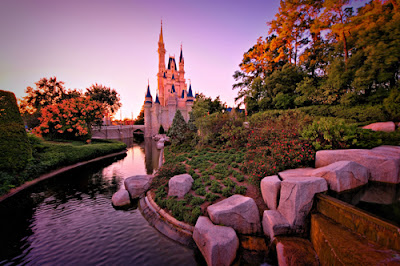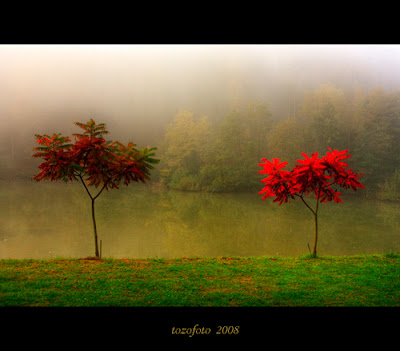 |
| Photo By Jose Ramon |
Frame Your Subjects Effectively
Framing or composing is all about arranging the elements in a landscape so that it makes the scene visually interesting. You could make your framing interesting by making use of either natural or man-made features present in the scene. One thing to remember while framing your shot is to avoid distracting elements like poles, rocks or people as they can ruin your image. Some elements most commonly encountered and that you could use effectively as compositional aids are doors, window openings, a hole in a wall, a gap in dense foliage or between trees, play of shadow on a scene etc.
 |
| Photo By Andrea Costa |
Think and Compose
If you encounter an interesting scene and take your camera out to shoot, pause a moment, think about what is it that makes the scene interesting to you. Identify the subject and think of ways to present it in a way that generates interest in the mind of the viewer. Points of interest add uniqueness to your images. Try different angles and see if changing angle adds value to your scene.
 |
| Photo By Joe Penniston |
Be Selective About What You Include
A landscape scene usually contains a range of subjects and including them all in a single shot might create clutter. Many points of interest that hold the viewers eyes will only make the image distracting. When faced with such a situation, identify the most important elements that constitute the scene and eliminate the rest from your composition, keeping the frame simple. Usually a small section of a vast landscape in itself will form a beautiful landscape picture.
 |
| Photo By Zoltan Toth |
Position Different Elements Carefully
In order to make an interesting landscape scene, apart from a strong composition, it is also important to have a main element of interest in the frame. This will facilitate a resting point for the viewer’s eye and ensure that a viewer’s eye does not roam aimlessly across the frame. If you are photographing a large tree, a house or a human being in an image, they should be big enough for the viewer to identify and understand it.
 |
| Photo By David |
Change your Vantage Point
Changing your perspective will change the scene dramatically. One of the best ways to capture a unique landscape photograph is to change your perspective. We tend to take either a horizontal or vertical photograph from where we stand. However, changing your vantage point will lend a different feel to your image. Tilt your camera, lie down, use your legs, and move around, to see what you can get.
 |
| Photo By Daniel Hoherd |
Use Leading Lines Effectively
Lines lead the eye of the viewer. For instance, converging lines like railway tracks can be used to lead the eye of the viewer into the composition. Diagonal lines can be used to add a point of interest or create a sense of drama.
 |
| Photo By Alexander Shchukin |
Backgrounds and Foregrounds
Foregrounds and backgrounds play a crucial role in a frame. They lend context, a sense of distance and meaning to a photograph. For instance, empty space in landscape photograph may act as negative space.
 |
| Photo By Jose Ramon |
While shooting a landscape, step back and think how you can make use of the foreground. Similarly , think of ways in which you can use a dramatic background to your advantage. Colourful skies, lush green fields, heavy clouds add magic to landscape images.
In the next article we will discuss about Photography - Landscape Photography - Landscape Photography and The Mysteries of Seasonal Change
In the next article we will discuss about Photography - Landscape Photography - Landscape Photography and The Mysteries of Seasonal Change